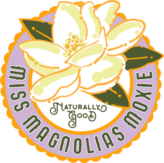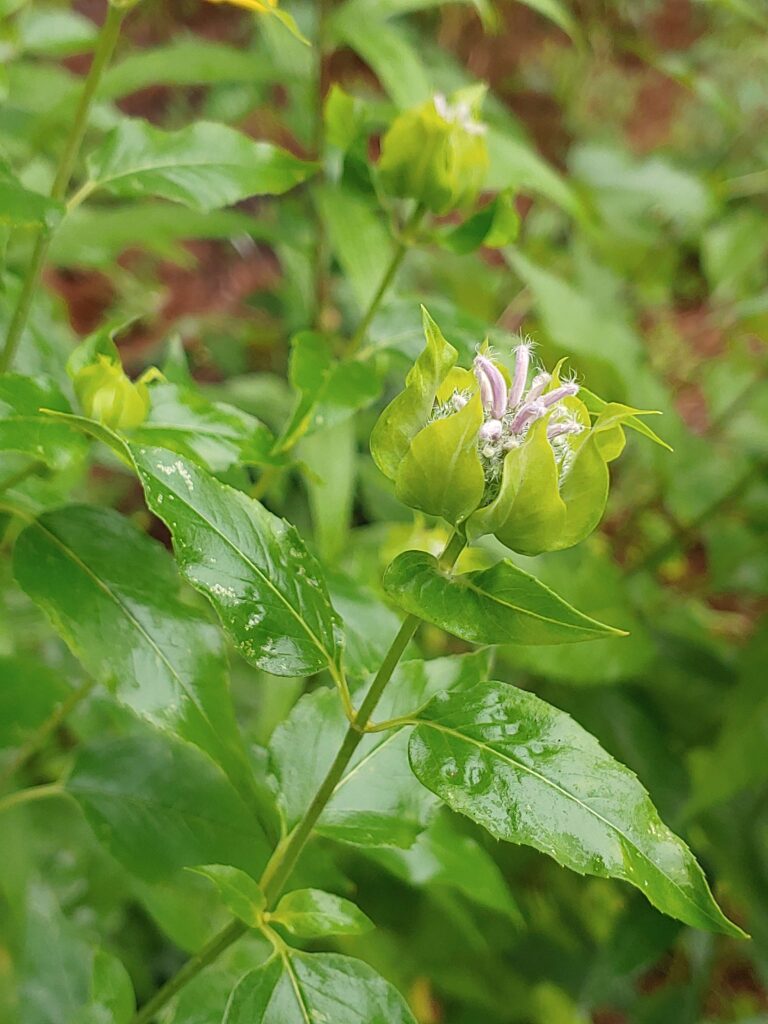Monarda fistulosa L.
Common Names: Wild Bergamot, Beebalm, Horsemint, Golden Melissa, Indian Nettle, Sweet Leaf
Family: Mint, Lamiaceae
Taste: Hot, aromatic
Energetics: Warming, drying
“Flowers always make people better, happier, and more helpful; they are sunshine, food and medicine to the mind.”
Luther Burbank
In the same woodland garden highlighted in yesterday’s post, is the magnificent perennial, Monarda fistulosa. I usually plant in 3’s and 5’s – so right in a triangle sits this patch. To be honest, I had forgotten I had planted them. As I was walking through the bed, I noticed the bud of its violet “ragged pompom” blossom turning around to find myself surrounded almost to my head in this wispy, yet structurally tall Monarda. And, when I went still, found that I was in a cloud of the familiar thyme/oregano-like aroma being wafted through the gentle disturbance of my visit.
It is native to North America enjoying prairies, thickets, clearings, woodland edges and savannahs. With its “tube/pipe-like” (fistulosa) flowers blooming from July – September, it is a favorite of butterflies, bees and hummingbirds. The subtle pink-lavender summer color and wide green base makes it a perfect companion backdrop for Rudbeckias, Silphiums and Helianthus.
All Monardas have been hard for me to connect to medicine – since I was first introduced to them as a flowering plant for garden use. In the South, most gardens hold a space for M. fistulosa’s cousin, the popular Monarda didyma. For me, it has a better taste than M. fistulosa; however, it is not as powerful medicinally.
For food, the leaves are used for an aromatic tea (blended with Lemon Balm, Ginger, Thyme, or Orange peels) and the long flower petals for salads – with a sweet oregano-like flavor. For me, anywhere I use oregano or thyme in my dishes like eggs, vegetables, and even my spaghetti sauce, I can substitute bee balm. And, the world of honeys, vinegars, marinades, and oxymels are a welcome treat as well.
Medicinally, we have learned much from the indigenous peoples about its historical use in treating a variety of complaints, but especially those connected with the digestive system, fungal infections and infections of the mouth (think thymol oil). A general list of preparations and uses include:
- Leaf tea, steams, honeys, and tincture to treat respiratory ailments, colic, colds, fevers, tinnitus, sore throat, stomach aches, nosebleeds, UTIs, insomnia, candida, and heart trouble;
- Leaf poultices (and oils) for headaches, skin eruptions, sore eyes, burns, menstrual pain, and lacerations;
- Flower tea for fevers, colds, aching kidneys and abdominal pain.
Modern herbalists have begun to compile much regarding the nervine capacity of this plant. It is known to help with excessive nervousness and anxiety being both stimulating/relaxing and warming/cooling – having a strong affinity to inflammatory conditions that correspond to nervous conditions.
Be sure to harvest when you can, since it’s difficult to find dried bee balm for sale. The flowers when they are fully opened and the young leaves prior to the flowers blooming are the parts to harvest. Try cutting the plant back immediately after it flowers, and you can sometimes get a second flowering. Be diligent on your processing – drying them quickly out of the sun, and, once dried, put them in air tight glass containers.

